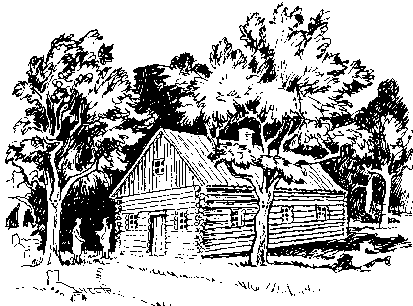

1737 Log Church
The Rev. Daniel Buckingham preached at the Dearfield Log Church and at Pilesgrove in 1738. The Pilesgrove people adhered to the "Old Light" while the Dearfield people adhered to the "New Light". As a result, the Pilesgrove people insisted upon having a distinct organization, and after much consideration, a commission of the presbytery acceded to their request, on condition that the house of worship should not be nearer to the Dearfield house than six miles. David Evans was settled as minister at Pilesgrove. The Dearfield Church went over to the "New Light" and remains so to this day. Dearfield then depended upon occasional preachers who sometimes remained in the community for extended periods of time. Among these men, who were some of the greatest colonial preachers, were, Samuel Blair, Gilbert Tennant, Samuel Finley and Charles Beatty. All were associated with the Log College at Neshaminy, Bucks County, Pennsylvania, and were a part of the group which formed the "New Light" movement within the Presbyterian church. Both Pilesgrove and Fairfield adhered to the "Old Light" side while Dearfield and Greenwich were spiritually linked with the more emotionally revivalistic school which later had a part in the establishment of the Presbyterian College of New Jersey at Princeton and were participants in the "Great Awakening" under the teachings of George Whitefield. Among the New Light preachers who visited Dearfield was the Rev. Andrew Hunter, who, after having supplied the congregations of Dearfield and Greenwich for a time, accepted a call from the united congregations and in 1746 was installed as pastor of both congregations. The relationship continued for 14 years. This connection, being found too inconvenient, was dissolved in 1760. Rev. Hunter remained in Greenwich and it was in the last months of his tenure in 1774 when members of his congregation were participants in the "Greenwich Tea Burning". The next pastor at Dearfield was Simon Williams, who was settled in 1764 and remained two years. It is not known how the people of Dearfield learned that the Rev. Enoch Green, a member of the Presbytery of New Brunswick, might consent to come to Dearfield, but in 1767 he was installed as their pastor and served in that capacity until his untimely death in 1776. In 1767, the Rev. Enoch Green suggested that a more permanent structure be built. It was in 1771, during Green's ministry that the Log Church was replaced by the present building. In 1771, for ten shillings, the land where the church now stands was purchased by the Society from Daniel Ogden and Azariah Moore. Jonathon Ogden, a son of Daniel Ogden was married to Martha Davis, daughter of Arthur and Esther (Preston) Davis and grand daughter of Benjamin Davis. Since an abundance of money was not available, a brick church was out of the question, so Rev. Green suggested the use of sandstone that was readily available in nearby fields. Each family garnered the stone from their land and when the women had spare time on their hands, they squared it off for use. It is interesting to note that the stones in the front and on the street side of the structure are regular and square, while the ones on the northern side and back are more irregular.
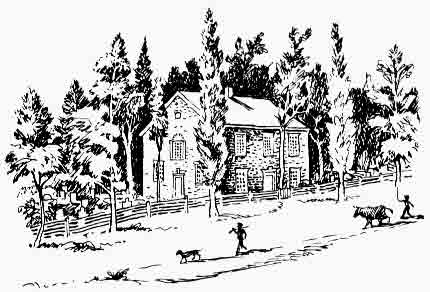
1771 Sandstone Church
The building then measured rectangularly 38' by 48' with the ceiling arched as it is now. The pulpit was then located to the left and in the center of the wall of the present church configuration. The aisles were of brick and the church was lined on three sides with galleries. The main entrance was on the east side of the building, facing the street. As was the custom in some areas, the remains of the very first ministers of the church were buried beneath the floor. Enoch Green and John Brainerd are the two in the case of the Dearfield parish. The interior of the church was exclusive of ornamentation since the main purpose of the church was to worship God and not to please the eye. As on this church and every other Presbyterian church at the time, there was no bell tower. It was symbolic to most people of the ties that were broken with the Church of England. In 1803, with the establishment of a post office, the spelling "Dearfield" was changed to "Deerfield" and the village was officially named "Deerfield Street", and retains that name today. Since that time the church has been known as the Deerfield Presbyterian Church. In 1858, while Dr. Thomas Cattell was pastor, the first major renovation took place. The church was enlarged by the addition of 25' to the north end of the building to accommodate the raised pulpit which had been moved from the west side of the building. The main doors on the street side of the building were removed leaving only the one across the south side of the sanctuary.
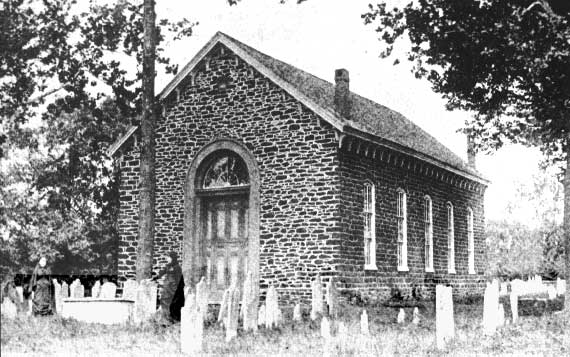
1858 Renovation
In 1868, the wainscoat up to the windows were installed. The walls were then frescoed with dark paint and stencil design. The woodwork was done in imitation oak and the doors of the pews were imitation walnut. In 1871 the Rev. Hammill Davis arranged for the celebration of the 100 years the stone building had served the community; a history of the congregation, to that date, was published. A few years later, in 1887, the sesquicentennial of the congregation was observed with over 1,000 visitors in attendance. Again a history of the church was published. In 1878, the chapel across the street was built to house the Sunday Schools and social goings-on of the church. It stands approximately on its original location, having been moved slightly for enlargements. In 1884, the pulpit was lowered and the doors to the pews were removed. In 1907, a major renovation of the building was undertaken to meet the standards of the day. The bell tower was built, the remaining gallery was taken out, more comfortable pews were installed, new carpeting was laid and the floor at the rear of the church was elevated to provide better visibility.
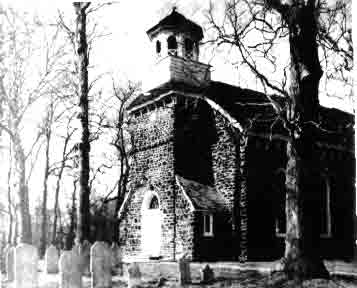
1907 Renovation
At this time the remains of John Brainerd were removed to the yard along the street side of the building and laid to rest under the memorial tombstone already in existence. At this time, steam heat was also added to the building. Final renovation of the building came in 1947. What started out as an acquisition for a pipe organ grew into a building program that reached over $70,000.00 before completion. A request for building assistance was put to Charles F. Seabrook, who benevolently said that he would match the amount raised by the congregation. Once he took an active role in the organ purchase, things began to move. It was found that major repairs were needed to accommodate the new organ. The church was then stripped to the bare walls and new windows replaced the old leaded ones. Since these windows had a higher arch, the stone work around each had to be reset. The new windows are colonial type reproductions of the original hand blown glass. New floors of stone were suggested by Mr. Seabrook's architect which would conceal the radiant heat beneath them. In digging the tunnels for the organ, Enoch Green was moved to his final resting place alongside Brainerd. With the problems of World War II, the tin needed for the pipes of the organ was unattainable by the Aeolian Skinner Company. Once again Seabrook stepped in and purchased an unused pipe organ from a theater on Chestnut Street in Philadelphia. He had his man disassemble it and transport it to the Skinner Company so that the tin of the pipe could be reclaimed for use in the church organ. The organ as it stands now was just refurbished by Mr. William Fenimore circa 1974. Since 1947 there has been slight change in the building.
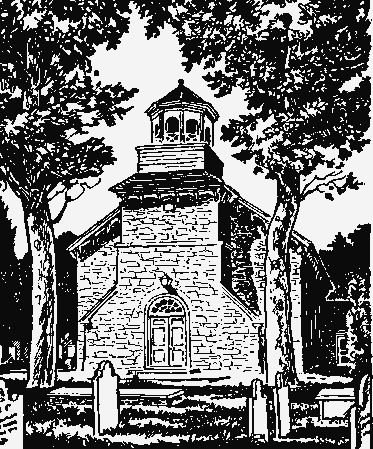
Deerfield Church
In its history as a meeting house, the Dearfield pulpit drew quite a few famous preachers of their day. In 1783, Bishop Asbury, the father of Methodistism, preached here. Andrew Hunter, the first minister, was a chaplain in Washington's Army and also participated in the Greenwich Tea Burning. Another member of the Tea Party, and indeed maybe its instigator, was Philip Vickers Fithian. He preached his first sermon here. John Brainerd was another renown minister who came to the church after Enoch Green. He is remembered for the work he and his brother, David, did with the Indians of the area. Buried alongside Green and Brainerd is Simon Hyde, a minister who spent only seven weeks at Dearfield before his death. The Rev. R. Hammill Davis led the church through the rough times of the Civil War and stayed on the pulpit 15 years, longer than any of the ministers before him. His great grandfather was a signer of the Declaration of Independence from the state of Pennsylvania. He was also responsible for starting the church missionary society. In 1973, following the period of declining membership which had been experienced by churches of all denominations, Norman Apel Koop, M.Div., Th.M., was installed as the 33rd minister to serve the congregation. A revitalization of interest in the Reformed Faith has since resulted in a membership which requires two morning services to accommodate those who come to Deerfield to worship and to study God's Word. The year of 1987 marked the 250th anniversary of the establishment of the church, and for the occasion the history of "The Presbyterian Parish of Deerfied Street," compiled by F.A. Palmer was published. As he completed his sixteenth year at Deerfield, Mr, Koop earned the distinction of remaining in the parish longer than any of his predecessors. Mission outreach highlights the planning of the Deerfield congregation and focuses on a sharing with others the blessings they recognize in their own lives. In 1995 the original communion service used by the Dearfield Church was on display upstairs in the lounge of the Christian Education Building. Back to Davis Family History